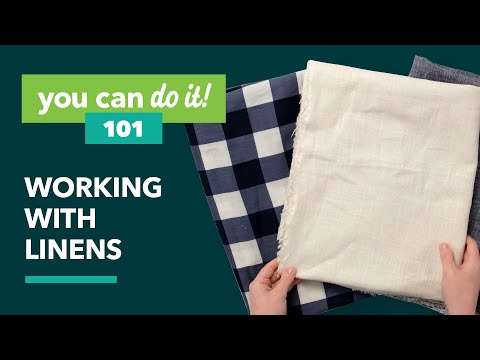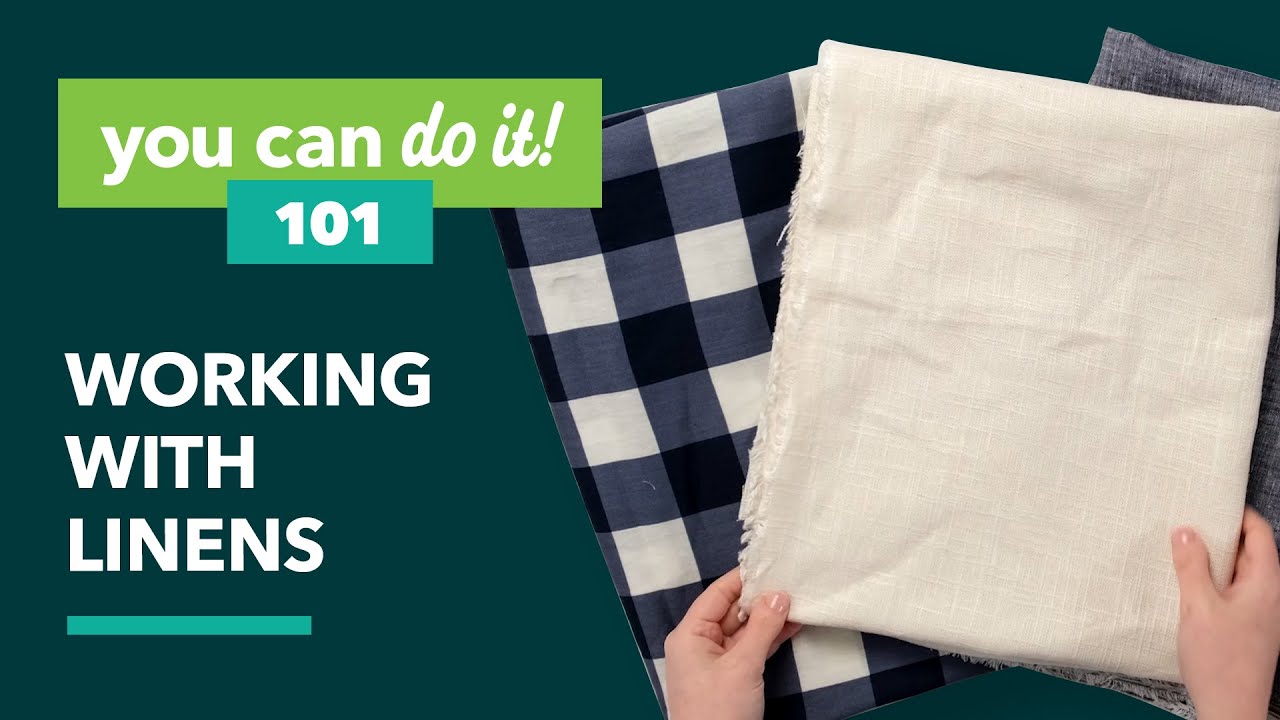Linen cotton fabric is a luxurious and versatile material that effortlessly combines the best qualities of linen and cotton. This unique blend creates a fabric that is not only exceptionally soft and comfortable, but also durable and long-lasting. With its natural breathability, linen cotton keeps you cool and fresh even on the hottest summer days, making it the ideal choice for clothing and bedding. The linen component adds a touch of elegance and sophistication, while the cotton ensures a gentle and smooth feel against your skin.
What sets linen cotton apart is its exceptional absorbency, which allows it to wick away moisture quickly. This makes it perfect for towels and bathrobes, as it dries rapidly and stays fresh for longer periods. Additionally, this fabric possesses remarkable durability, making it resistant to wear and tear, and ensuring it remains in excellent condition for years to come. The natural fibers of linen cotton also make it highly eco-friendly, as it is biodegradable and renewable, contributing to a more sustainable lifestyle.
Whether you’re seeking a fabric for clothing, home decor, or accessories, linen cotton offers endless possibilities. Its versatility enables it to be effortlessly tailored into a range of styles and designs, from casual and contemporary to elegant and timeless. Its subtly textured appearance adds depth and character to any item, while its softness and comfort make it a pleasure to wear and use.
Discover the timeless elegance and unparalleled comfort of linen cotton fabric, and elevate your everyday experiences with its exceptional qualities.

The Versatile World of Fabric: Linen and Cotton
When it comes to clothing and home textiles, linen and cotton are two of the most popular choices. Both fabrics have been used for centuries due to their versatility, durability, and comfort. In this article, we will delve into the characteristics of linen and cotton, explore their uses, and highlight their key differences.
The Allure of Linen
Linen is a fabric made from the fibers of the flax plant, known for its natural and earthy appeal. It has been used since ancient times for its exceptional breathability and moisture-wicking properties, making it a perfect choice for warm weather. Linen fabric is highly absorbent, allowing it to quickly absorb and release moisture, keeping the wearer cool and comfortable.
Another unique characteristic of linen is its strength. Despite its lightweight and airy feel, linen is incredibly durable, making it a reliable fabric for various applications. Linen is resistant to wear and tear, and its fibers actually become stronger when wet, making it an ideal choice for household items like tablecloths, napkins, and bedding.
Furthermore, the natural texture of linen gives it an elegant and timeless appeal. Its slightly rough surface and subtle wrinkles add a touch of sophistication to clothing and home décor alike.
The Classic Cotton
Cotton is a natural fiber derived from the cotton plant, and it is one of the most widely used fabrics around the world. Known for its softness and comfort, cotton is a popular choice for everyday clothing and bedding. Cotton fabrics are breathable and hypoallergenic, making them suitable for people with sensitive skin.
One of the key advantages of cotton is its versatility. It can be woven into various types of fabrics, including jersey, twill, and denim, each with its own unique characteristics. For instance, jersey cotton is lightweight and stretchy, while denim cotton is heavy and durable.
Cotton fabrics are also known for their absorbency, although they may not dry as quickly as linen. However, cotton is less prone to wrinkling compared to linen, making it a more low-maintenance option. Additionally, cotton fabrics are easy to care for and can withstand repeated washing without losing their shape or color.
Uses and Applications
Both linen and cotton have a wide range of uses in various industries, from fashion to interior design. Let’s explore some of their common applications:
1. Clothing
Linen is a popular choice for summer clothing due to its breathability. It is commonly used in the production of shirts, dresses, skirts, and lightweight trousers. Linen’s natural texture and ability to drape well make it a favored fabric for creating flowing and relaxed silhouettes.
Cotton is a staple fabric in the fashion industry and is used to create a wide range of clothing, including t-shirts, jeans, dresses, and underwear. Its softness and breathability make it a comfortable choice for everyday wear.
2. Home Textiles
Linen and cotton are both widely used in the production of home textiles:
Linen is commonly used for tablecloths, napkins, and curtains due to its natural elegance. It adds a touch of sophistication to any dining table or living space. Linen bedding is also highly sought after for its luxurious feel and temperature-regulating properties.
Cotton is the go-to fabric for bed sheets, pillowcases, and towels. Its softness and moisture-absorbing qualities make it perfect for creating a cozy and hygienic environment in the bedroom and bathroom.
The Differences
While linen and cotton share many similarities, there are some key differences between the two:
1. Comfort: Linen is known for its exceptional breathability and moisture-wicking properties, making it the superior choice for hot weather. However, cotton is softer and generally more comfortable against the skin.
2. Durability: Linen fabric is incredibly strong and durable, becoming even stronger when wet. Cotton, on the other hand, is less prone to wrinkling and can withstand repeated washing without losing its shape or color.
3. Care: Linen requires more care and attention. It is prone to wrinkles and may shrink if not properly cared for. Cotton, on the other hand, is easy to care for and can be machine washed and dried without much hassle.
The Choice is Yours
Whether you prefer the natural elegance of linen or the softness and versatility of cotton, both fabrics offer a wide range of benefits and applications. Consider the specific qualities you are looking for and the purpose of your purchase to make the best choice for your needs. Whichever fabric you choose, you can be sure that linen and cotton will continue to play a significant role in the world of textiles for years to come.
Title: Mastering the Art of Sewing with Linen Fabric
Video Source : JOANN Fabric and Craft Stores
List of Fabric Types: Linen, Cotton
- Linen
- Cotton
Fabric Comparison: Linen vs Cotton
| Property | Linen | Cotton |
|---|---|---|
| Origin | Derived from the fibers of the flax plant, Linum usitatissimum | Derived from the fibers of the cotton plant, Gossypium |
| Texture | Linen has a unique, slightly coarse texture with a natural luster | Cotton has a soft, smooth texture |
| Strength | Known for its exceptional strength, even when wet | Relatively strong, but weaker when exposed to water |
| Breathability | Highly breathable fabric that allows air circulation, keeping the body cool | Also breathable, but not as effective in moisture management as linen |
| Wrinkle Resistance | Notoriously prone to wrinkles, giving linen its distinctive relaxed and casual look | Fairly resistant to wrinkles, but may require ironing to achieve a crisp appearance |
| Absorbency | Has excellent absorbent properties, capable of quickly wicking away moisture | Can absorb moisture but retains it longer than linen |
| Durability | With proper care, linen can be long-lasting, becoming softer and more comfortable with time | Generally durable, but may weaken over time due to repeated washing |
| Uses | Commonly used in clothing, home furnishings, and upholstery due to its natural elegance | Widely used in various applications, including clothing, bedsheets, and towels |
As an expert in textiles, it is crucial to understand the differences between linen and cotton. Linen, derived from the flax plant, is known for its unique texture, exceptional strength, and high breathability. Its slightly coarse texture adds character while the natural luster enhances its overall appearance. Linen’s breathability allows air circulation, making it an ideal choice for warm weather garments.
On the other hand, cotton, derived from the cotton plant, offers a soft and smooth texture. While not as breathable as linen, cotton is still comfortable to wear and widely used in various applications. It provides good absorbency, but not as effective as linen in moisture management.
One notable difference between the two fabrics is their wrinkle resistance. Linen is notorious for its wrinkles, which actually contribute to its relaxed and casual aesthetic. In contrast, cotton is fairly resistant to wrinkles, although it may require ironing to achieve a crisp appearance.
Both linen and cotton have their own strengths and weaknesses in terms of durability. With proper care, linen can be long-lasting, becoming softer and more comfortable over time. Cotton, while generally durable, may gradually weaken with repeated washing.
In terms of usage, linen is commonly employed in clothing, home furnishings, and upholstery due to its natural elegance. Cotton, on the other hand, finds widespread use in clothing, bedsheets, towels, and more.
Understanding the properties and characteristics of linen and cotton enables informed decisions when selecting fabrics for different purposes. Whether you prioritize breathability, texture, or durability, both linen and cotton offer distinct qualities that can enhance your desired end product.

